How to Live Life Efficiently and Effectively
Every so often people ask me how I manage to do so many things in my life. People often find it hard to make time for things like martial arts, writing, and other hobbies while balancing their jobs and personal relationships. My ability to live life efficiently and effectively is about knowing my roles and setting goals.
Knowing Your Roles
We all have roles in our lives. Some we choose. Some are chosen for us. To live life efficiently and effectively, it’s important not to let other people define our roles for us. You have to choose your own path. You’re more likely to stay focused and motivated if you’ve chosen your roles based on your own personal values.
Here are my roles for example (in no particular order):
1) martial artist
2) teacher
3) writer
4) wife
5) daughter/sister
6) friend
These are the roles that I define myself by. Knowing these roles is fundamental to setting personal goals. Of course, I do other things with my life. I do marketing contract work as a sort of “day job”, but notice that I didn’t put “marketing consultant” on the list. It is not one of my life roles that define me. Though the work I do as a marketing consultant does play a factor is my role as “wife” in terms of providing in my family, and for my role as “teacher” as I use the skills to bring in more students.
Without setting goals, people often end up spinning their wheels, or working very hard to end up in a place they don’t want to be. This is not the way to live life efficiently. Once you’ve set your roles, you should set goals related to them, long term, medium term, short term and daily. This sounds like a lot of work, and it is, but it’s fun work.
Long-Term Goals
Long term goals are about what you want most in life. Ask yourself this: what do you want to have accomplished by the end of your life? Let yourself dream big. One of my long term goals is to be a martial arts master who truly understands the inner workings of the arts and has an international reputation as a teacher. I also want to be an internationally renowned author, with several dozen books under my belt.
Medium Term Goals
Medium term goals are ones that you’re working toward over the next 1-3 years or so. These should be related to your long term goals. Following my long term goals listed above, I have the following medium term goals; I want to earn my purple belt in Shorinji Kan Jiu-jitsu (by March 2011). I want to promote at least 5 students to purple or blue belt (by July 2011). I want to establish of base of 40 students (by January 2012). I want to move to a larger dojo location that would allow me to use all my mats (by April 2012). I want to publish a martial arts book (by January 2012).
Short Term Goals
Short term goals are your weekly and/or monthly goals. Depending on the scope of your work, you may prefer to use one or the other, or a combination of the two. For example, following my medium term goal of wanting to earn my purple belt, here are a couple of examples of monthly goals: Train in Shorinji Kan curriculum at least 8 times. Memorize the Japanese terms for each technique. Weekly goals are simply an extension of these, for example: Train in Shorinji Kan curriculum twice. Memorize the Japanese terms for 4 techniques.
Daily Goals
Daily goals are probably the most important part of the whole goal setting process. Personally, I set 6 goals for myself each day that all pertain to my life roles. Here is an example of a typical set of daily goals:
1) Write a blog post for Jiu-jitsuSensei.com. (roles: martial artist, teacher, writer)
2) Plan belt gradings for the next month and email students about dates (roles: martial artist, teacher).
3) Do 3 hours of marketing contract work (roles: wife).
4) Finish writing wedding thank you cards (roles: daughter, sister, friend, wife).
5) Do visualization practice and work on memorizing 4 Japanese terms for Shorinji Kan techniques (roles: martial artist).
6) Run a great class at the dojo tonight (roles: martial artist, teacher).
There may be other tasks I need to do in a day that appear on a separate list, but these ones are ones that pertain to my life roles and ultimately, my long term goals. If something on this list doesn’t get done in a day, it gets bumped to the top of the list the next day. By always adhering to your daily goals, you ensure that every day you’re doing something that contributes to what you want to be and achieve in life.
I will continue on with this theme further in my next blog post about reducing or eliminating time wasters.
A Personal Review of the Zone Diet
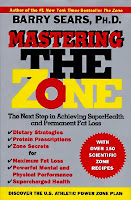 Leading up to an important martial arts grading, I decided to try eating healthier. A martial artist friend of mine recommended the “Zone Diet”, featured in the book Barry Sears’ book, Mastering the Zone
Leading up to an important martial arts grading, I decided to try eating healthier. A martial artist friend of mine recommended the “Zone Diet”, featured in the book Barry Sears’ book, Mastering the Zone. It’s not so much of a diet specifically for weight loss and more a way of eating on an ongoing basis that helps you achieve peak performance physically and mentally.
Sears’ concept of “The Zone” changes the way you look at nutrition, weight loss and performance. It stresses getting more of your calories from fat and protein and fewer from carbohydrates, but it’s not about getting rid of carbs altogether. It’s about eating the right amount of protein relative the the amount of carbs you’re eating to maintain the right levels of insulin production in your body. (more…)
Why We Use the Coloured Belt (Kyu) System
 Many people eschew the use of the coloured belt system (or ‘kyu’ ranks) as not being traditional to the Japanese roots, claiming that they are simply a carrot dangled to keep impatient westerners interested. Mikonosuke Kawaishi is generally regarded as the first to introduce various colored belts in Europe in 1935 when he started to teach Judo in Paris. He felt that western students would show greater progress if they had a visible system of many colored belts recognizing achievement and providing regular incentives who felt that it would help westerners learn and stay.
Many people eschew the use of the coloured belt system (or ‘kyu’ ranks) as not being traditional to the Japanese roots, claiming that they are simply a carrot dangled to keep impatient westerners interested. Mikonosuke Kawaishi is generally regarded as the first to introduce various colored belts in Europe in 1935 when he started to teach Judo in Paris. He felt that western students would show greater progress if they had a visible system of many colored belts recognizing achievement and providing regular incentives who felt that it would help westerners learn and stay.
While that was the original reason for the introduction of the coloured belt system, and not an altogether complimentary one towards westerners at that, there are a number of other reasons why the system makes sense, even if it’s not used as a dangling carrot.
In our dojo, we use the various ranks to break up our students’ learning into logical blocks. This is to provide the best platform for learning for our students, to ensure that the proper foundation is being built so that people don’t focus always on learning new stuff when they don’t have the skills they need to move ahead. The kyu system is also designed to help keep people safe. If people don’t learn the proper skills before doing live training like sparring or grappling, the chances of injury are greatly increased.
Belt/kyu gradings give us teachers a system whereby we periodically take a focused look at our students’ progress to ensure they have learned what they need to know before moving on to more advanced curriculum. In our dojo, a new belt is not a trophy to be coveted or lorded over other students, nor would we ever put up with such behaviour. It is meant to indicate what level of curriculum the student knows, serving as a guide for us teachers. It also helps newer students understand who can help them best when they need it.
This may not necessarily be the way it is done in dojos throughout Japan, but that doesn’t mean that it isn’t equally valid in a western context. It is not necessarily a reflection of “the impatience of westerners.” Different cultures learn in different ways. In the west, people are more accustomed to systematized learning systems and tend to do best when knowledge is broken up into stepping stones.
At our dojo, you’re only invited to grade for the next belt level when you’re ready, as evaluated by the instructors. If a student takes twice as long as the average to move to the next level, so be it. I’ve had students wear the same belt for over a year, even two years without progressing. And I’m not talking about senior belts, I’m talking about lower levels here. If they haven’t learned what they need to learn to move on to the next level, they simply stay where they are. Many dojos would consider this practice bad for business, but in the kind of dojo I’m running, it is much worse for business to let people move up a level or learn curriculum they’re not ready for as it produces poor martial artists and can lead to injury (their own or others’).
This is not to say that I have anything against the traditional Japanese way, I just think that each way has its place and is relevant in different contexts both inter-culturally and even within one culture. Neither way should be looked down upon unless it is being improperly used (i.e. people are not learning what they need to learn) or with cynical motivations (just to make more money without care for quality).
Leadership Training Courses Now at Our Dojo
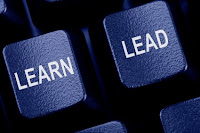 I recently had the privilege of attending the Assistant Instructor course for Jitsu Canada. This course is a requirement for the purple belt level in their organization. It’s a half-day course that trains students in the leadership skills that are expected of them at their belt level. They also have an Instructor course, required for brown belt and a Club Instructor course, required for 1st degree black belt.
I recently had the privilege of attending the Assistant Instructor course for Jitsu Canada. This course is a requirement for the purple belt level in their organization. It’s a half-day course that trains students in the leadership skills that are expected of them at their belt level. They also have an Instructor course, required for brown belt and a Club Instructor course, required for 1st degree black belt.
Having a university background in Communication and Training, I have been meaning to put together some leadership courses tailored specifically for my Vancouver/Richmond BC martial arts dojo. I am now planning to run my first Assistant Instructor course early in the new year.
The purpose of this course is to teach intermediate colour belts how to run warm-ups and cool-downs, how to assist fellow students in their training, how to teach breakfalls, how to help fellow students with dojo etiquette, how to set an example for other students, etc. This will be a grading requirement to reach purple belt from now on. I will also be creating an Instructor course that will be required for brown belt, which teaches senior colour belts further leadership skills, classroom management skills, technique demonstration skills, etc. This is designed to support their learning as an apprentice instructor. Students of both classes will also receive manuals for reference.
Leadership is very important for the overall health of a dojo as newer students look to their seniors as an example of how to behave and what they can expect as they themselves develop. Most dojos impart these skills organically, meaning there are no set leadership classes. They simply lead by example and hope for the best. This can be an effective system, but sometimes certain information slips through the cracks. By having a set leadership training program, it ensures that everyone at certain belt levels are on the same page and that the leadership of the dojo is united in its approach.
And now to you… what is the leadership training like in your dojo? Do you find that it helps build effective leaders? What kinds of skills would you like to see in such a program?
How I Learned to Be a Student
As part of his Shodan requirements, Chris was expected to submit an essay. The topic I gave him was to answer the following question: “What is the most important thing you’ve gained as a martial artist from cross-training in Can-ryu Jiu-jitsu?”. His essay response was very interesting, served with a healthy dose of humble pie. It was as follows:
How I Learned to Be a Student
By Chris Olson
Training in a martial art can be a very fulfilling and enriching experience. It can also be very insular and lead to a very narrow view of the martial arts.
When a new student to the martial arts begins their training, it’s important they receive regular and consistent training to ensure a solid learning of basic and fundamental techniques. Organizations with a well-developed and standard curriculum offer stability, and opportunity for students to grow, and over time take more responsibility for their own training.
They begin to fulfil a necessary role in the dojo, becoming role models, assistant instructors and eventually instructors. Much of what students learn, how they learn, and how they eventually teach is influenced by how and who taught them. You can often tell who taught an instructor based on their method of instruction; the analogies they use while demonstrating, their movement in executing a technique, etc.
While this can lead to a consistent level of instruction, (hopefully a good one), it can inhibit the growth of both the style and the instructors.
Cross training can offer more advanced students/instructors several benefits to further personal development.
It provides the chance for instructors to see a similar technique taught with a different focus, providing new angles for understanding the technique. It can also expose them to entirely new techniques and concepts that can enhance their training.
The biggest benefit I have received from training in another style of Jiu jitsu is not what’s been added to my technical repertoire however. It’s the maturation of my training mind-set, and development of a wider perspective.
I started training in Can-ryu Jiu jitsu because I was looking for a replacement for my original style, Shorinji Kan. I was looking for exactly what I had before, not something new to learn.
Becoming a white belt again, and starting fresh with an open mind was much harder to do than I thought. In retrospect I did a lousy job of it.
Yes, I put on the white belt, and I said all the right things, but underneath it I was an arrogant, cocky brown belt, not really looking to learn, but looking to practice what I thought I already knew. I was lucky that my quiet arrogance was misconstrued as respect and shyness. I didn’t think I was arrogant, and unwilling to learn, but I was, I just hadn’t realized it yet.
I faked learning long enough to actually start learning, at which point, I realized, that might be a better approach. It turns out that it was better, and I’ve been very fortunate since.
Through my connection with Pacific Wave Jiu Jitsu, I’ve been lucky enough to train with professional boxers, MMA students, a Pan American games gold medallist grappler, a world renown Aikido Sensei, and numerous Jiu jitsu instructors. My wide experiences have taught me more techniques than I can remember, but the one thing I do remember is the great attitude and friendly sharing nature of the martial arts community. It’s created a healthy drive to move outside of my comfort zone and to learn from wherever I can.
After nearly a decade of training, I feel more like a student than ever before. I think I’ve finally figured out how to learn, and I am now as comfortable getting insights from senior instructors as I am from my own students.
Braving through a Belt Test with an Injury
My student and assistant instructor Chris Olson completed his Shodan exam this past Sunday. I am happy to announce that he passed. He earned his Shodan, but suffered a number of hardships during his grading in the way of injury. This made the grading more difficult, both from his point of view in having to try and perform without aggravating his injury, and for me in that I had to strike a balance between pushing him appropriately, but without creating scenarios that are sure to cause further damage.
Chris injured his foot quite badly during the 2-on-1 sparring portion in the first quarter of his grading. We’re still waiting for x-ray results, but he either got a very serious bruise or very minor fracture. We stopped the grading after he got hurt in order to ice it and assess whether or not the grading should continue. Chris wanted to keep going. He was able to walk on it, so we let him, asking that our doctor student, Jenny, keep an eye on him for the rest of the grading.
It was clear that the foot injury was affecting Chris’s performance, but we kept that under consideration in our evaluation of the test. While his ground grappling suffered greatly (Chris normally uses his legs a lot when he grapples) and his throws weren’t nearly as smooth (his injury prevented him from bending too low), he did some beautiful Jiu-jitsu circles, including a blindfolded circle. Because of the flexibility of choice in performing the circles, he was able to choose appropriate techniques that wouldn’t cause him as much pain.
While Chris’s Shodan grading wasn’t performed under the most ideal circumstances, it was a good for demonstrating both Jiu-jitsu skill/versatility and warrior spirit to fight on when the chips are down. We are all very proud.
There is a line though that you have to be careful not to cross when it comes to injuries during belt tests. If the person can’t put weight or pressure on the affected area, they shouldn’t continue the grading in my opinion. My golden rule is that if continuing with the grading is likely to worsen the injury in a serious way, the test should be ended. It can be a hard judgment call to make though. I was just glad to have a doctor on the mats to help make the call.
Does anyone out there have any experience with handling injuries during a belt test? Please share in the comments.
How to Practice Good Strike Targeting
A little while back I discussed the importance of good strike targeting in my post The Difference between Fine & Gross Motor Striking Skills. But how does one improve their targeting skill? Here are 3 different ways to actively improve your strike targeting:
1. Make Contact. Whenever safe to do so, make contact with your intended target. It makes it a lot easier see if your targeting is accurate rather than doing your strike “in the air.” While this is not possible to do safely for all targets, like the nose and eyes for example, with most targets, you can make light contact in a safe manner. Nerve motor points (i.e. solar plexus, brachial plexus origin, lateral femoral, etc.) can easily be practiced safely, restricting the amount of force applied to 5-10% depending on your uke. You can also make light contact to the ribs with an elbow. If you’re receiving strikes to the solar plexus or rib area, make sure you tense your abdominal muscles and breathe out to lessen the effects of the impact because even a light strike can cause you discomfort if you’re not expecting it. If the students in your dojo wear groin protectors like we do, strikes to that area can also be practiced with contact. If contact cannot be made safely, just make sure your strikes are well placed and that if you were to follow through, you would clearly be making contact.
2. Communicate. The beauty of making contact is that your uke can help you improve your targeting by letting you know when you’re on or off target and by helping you to make adjustments so that you improve. People should not be shy or arrogant about doing so, nor should people be embarrassed if they’re not perfect. It is all part of the learning process. You don’t even necessarily need to talk much about it, you can let the partner know even just by taking their striking surface, whether it’s a fist or an elbow and repositioning it casually.
3. Practice on Moving Partners. Once you’ve started getting a good sense of targeting on a static, compliant uke, you should move on to practicing on moving, non-compliant uke. So rather than having your uke bear hug you and just stand there, like you would when you were just a beginner, you should have your uke bear hug you and pull or push you around more so that his targets are harder to access. Another way you can practice on the move is by reacting to your attacker as she moves in rather than waiting for the grab.
Actively practicing good targeting is important because when you’re in the mud and the blood and the beer, you ideally want your strikes to hit accurately instinctively, without having to think about it. But when the combat stress is high and your adrenaline is pumping, the less well trained you are, the less likely you are to hit accurately. Something to think about…
Women’s Self-Defense: Dealing with Assaults from People You Know
It is said that 3/4 of assaults on women are performed by people they knew prior to the incident. This is something I tell participants in my women’s self-defense classes. The scenario of an anonymous, malicious attacker coming at them from an alley or other remote location that women fear most is actually rare in comparison. This is a very important fact to address and should affect the way people teach self-defense for women.
More Common Assault Scenarios
So if the men are usually people that the women already know, what are the scenarios? Firstly, assault doesn’t necessarily mean an attack. An assault can be unwanted touching, like a sexual harassment situation at a night club, party or even at a workplace or at school. On the other hand, it could be more than that. Most rape situations that occur are date rapes. Another consideration is domestic violence involving a husband, boyfriend, father or brother, which is actually a very different type of situation, the scope of which I can’t really cover in this particular post. So what does this mean when it comes to teaching women’s self-defense?
First Line of Defense: Awareness
Awareness is the first line of defense. When it comes to dealing with people previously known by a woman, this can mean different things. It may mean recognizing potential miscreant behaviour in an individual like a man openly eyeing women, making demeaning comments, being very drunk or high, etc. Once a woman is aware of such behaviour, she can avoid situations in which she might come into contact with him or be alone with him, or she could report his behaviour to a bouncer, supervisor, teacher, etc. It could also mean being aware of the actions of people around you, like if a man she knows appears to be following her as she leaves a party, walks home from school, to her car after work, etc.
And even if no “warning signs” are going off, a woman should still take precautions with men she is less familiar with. A woman should not go into man’s home alone when she doesn’t know him very well. She should make sure that people know where she is when she is going on a date, what time she should be home, where she can be reached, etc. And every woman should carry a cell phone. These are just a few precautions.
Second Line of Defense: Boundaries
Once a potential threat has been identified, and a woman is unable to avoid being in contact with the man, she should set boundaries to prevent assault. If possible, the woman should keep physical distance between her and the man. If he is approaching her in a way that makes her fell threatened, she should stand in an interview stance (strong leg back, hands up, palms facing him). If he makes overt advances on her in a way that makes her uncomfortable (verbally or physically), she should tell him to back off in an assertive, non-aggressive tone. If the man persists in his advances, she should increase the strength of her tone as necessary.
Third Line of Defense: Combat
If the threat develops into an assault, the woman may escalate to physical combat as a defense. Now if it is a social situation and the assault is fairly minor (i.e. unwanted touching) and using words and an assertive tone have done nothing, a woman might choose to use a less violent combat method (i.e. sharp kick to the shin, stamping on a foot, etc). I also teach women to combine this with words to gather witnesses, yelling “No!”, “Stop!” or “Let me go!” This will usually be enough in a social situation in which other people are around.
If it is a more serious assault situation, like rape or a violent attack from a man, it makes no difference whether they know the person or not. She may use as much force as is necessarily to nullify the situation. As a woman, of course, she is justified in using more force than the attacker is using on her to make up for her lack of size or strength as compared to her attacker.
And Remember…
Awareness and boundary-setting are the most important skills for women to learn. They are the ones that help women keep out of trouble in the first place. Combat is nice to know and helps with confidence, but ultimately the other two skills are the ones that will be used most often.
Addressing Differences in Martial Arts Styles
After all the recent training with instructors of other styles of Jiu-jitsu, it was interesting for me to note the differences in philosophy when it comes to teaching the art. It seems to me that there are two main approaches to a martial arts style, with their own benefits and drawbacks. They are as follows.
1. The Specialists. In some martial arts styles, they take the approach of choosing a particular skill and putting the majority of their focus on it. BJJ focuses almost entirely on sport ground grappling. KoKoDo Jujtutsu focuses primarily on pain compliance using joint manipulation.  Yoshinkan Aikido, on the other hand, has a slightly different take, focusing on body structure control using joint manipulation. The list goes on. Specialists usually focus on a skill that requires a lot of training in order to become proficient (i.e. a fine motor skill). The advantage of this approach is that students of a specialist style become really good at the particular skill that is focused on and when a high level of skill as attained, the students may learn to apply that skill within a wide variety of defensive contexts.
Yoshinkan Aikido, on the other hand, has a slightly different take, focusing on body structure control using joint manipulation. The list goes on. Specialists usually focus on a skill that requires a lot of training in order to become proficient (i.e. a fine motor skill). The advantage of this approach is that students of a specialist style become really good at the particular skill that is focused on and when a high level of skill as attained, the students may learn to apply that skill within a wide variety of defensive contexts.
2. The Generalists. Other martial arts styles focus on a wider variety of skills, with the goal of teaching people to apply their skills in different defensive contexts. My style, Can-ryu Jiu-jitsu is 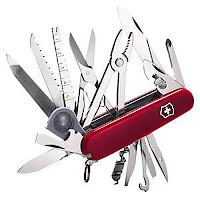 one such example. We teach with the goal of transmitting practical self-defense skills therefore our style comprises of striking, takedowns/throws, ground defense, and weapon defense. To make up for the broadness of our base, our core curriculum is designed to use more gross motor skills (especially striking and certain types of takedowns/controls) to make them easier to learn and apply, whereas fine motor skills are taught more as advanced training. Shorinji Kan Jiu-jitsu is another example. They teach also teach the same types of skills as I listed above, but with a stronger focus on throws and joint manipulation as the core of their curriculum.
one such example. We teach with the goal of transmitting practical self-defense skills therefore our style comprises of striking, takedowns/throws, ground defense, and weapon defense. To make up for the broadness of our base, our core curriculum is designed to use more gross motor skills (especially striking and certain types of takedowns/controls) to make them easier to learn and apply, whereas fine motor skills are taught more as advanced training. Shorinji Kan Jiu-jitsu is another example. They teach also teach the same types of skills as I listed above, but with a stronger focus on throws and joint manipulation as the core of their curriculum.
Neither type of style is right or wrong. Take the metaphorical knives I used for each category. Is one “better” than the other? It depends on the context. If you want to have a sharp knife that’s great for cutting food, the Ginsu is the superior knife, even if it may fall short in other contexts. But if you need a tool for a variety of purposes, Swiss Army Knife is a better choice for convenience, though it may fall short when compared to the associated tools specifically designed for one purpose.
I think we’re best served by having both types of martial arts styles. As a practitioner of generalist style, I appreciate having the opportunity to go to specialist dojos to further hone specific skills. I’ve trained in BJJ, boxing, joint manipulations specialists (Jiu-jitsu and Aikido), etc, all of which have contributed to my learning. That being said, I will always appreciate the base that Can-ryu has given me as a generalist school.
Now I’ll turn the question over to you. What type of style do you study and why?
How Caffeine Can Enhance Your Physical Performance
 Jenny, my doctor student, sends me all sorts of interesting information about nutrition and medicine in relation to sports and exercise. She recently fed me a link discussing caffeine consumption and how it can improve physical performance.
Jenny, my doctor student, sends me all sorts of interesting information about nutrition and medicine in relation to sports and exercise. She recently fed me a link discussing caffeine consumption and how it can improve physical performance.
Don’t get too excited. This doesn’t mean that if you’re a caffeine junky who can’t get through a day without your coffee and/or coke that you’re more likely to perform well in competitions or during belt tests. It’s all about when it’s consumed and how much of it…. maybe.
There are a number of studies that suggest that if you consume caffeine (between 3-9mg per kilo of body weight) an hour before a physical event, you’re likely to experience performance-enhancing effects. To give you some perspective, a cup of drip coffee has 180mg, so if you’re 165lbs, you would need to have around 1.5-3.5 cups of coffee. Some of those studies also suggest that you’ll get the most benefits from caffeine if you’re usually a non-consumer.
Studies are not all entirely in agreement, however. There are several studies that have found no benefit for endurance athletes when using caffeine at the rates suggested above.
This post is not to suggest that I endorse consuming caffeine to enhance performance. If you’ve trained properly for a belt test, there is no reason why you shouldn’t do well. As for competitions, well, I guess it depends on what your motivations are for doing them. The Olympics seem to pooh-pooh caffeine consumption for this purpose. I just find the topic interesting because I’ve heard a lot of debate on the merits and demerits of caffeine.
How do you find caffeine affects your performance, if at all?

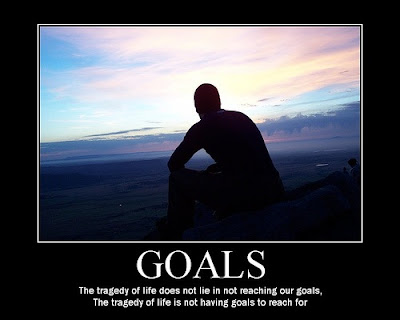
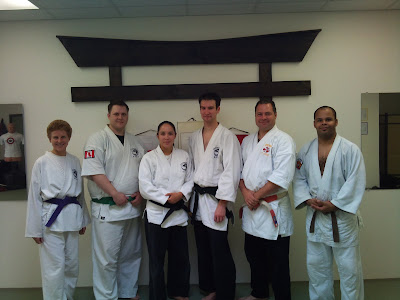
 We're proud to announce that Lori O'Connell Sensei's new book, When the Fight Goes to the Ground: Jiu-jitsu Strategies & Tactics for Self-Defense, published through international martial arts publisher Tuttle Publishing, is now available in major book stores and online. More about it & where to buy it.
We're proud to announce that Lori O'Connell Sensei's new book, When the Fight Goes to the Ground: Jiu-jitsu Strategies & Tactics for Self-Defense, published through international martial arts publisher Tuttle Publishing, is now available in major book stores and online. More about it & where to buy it.